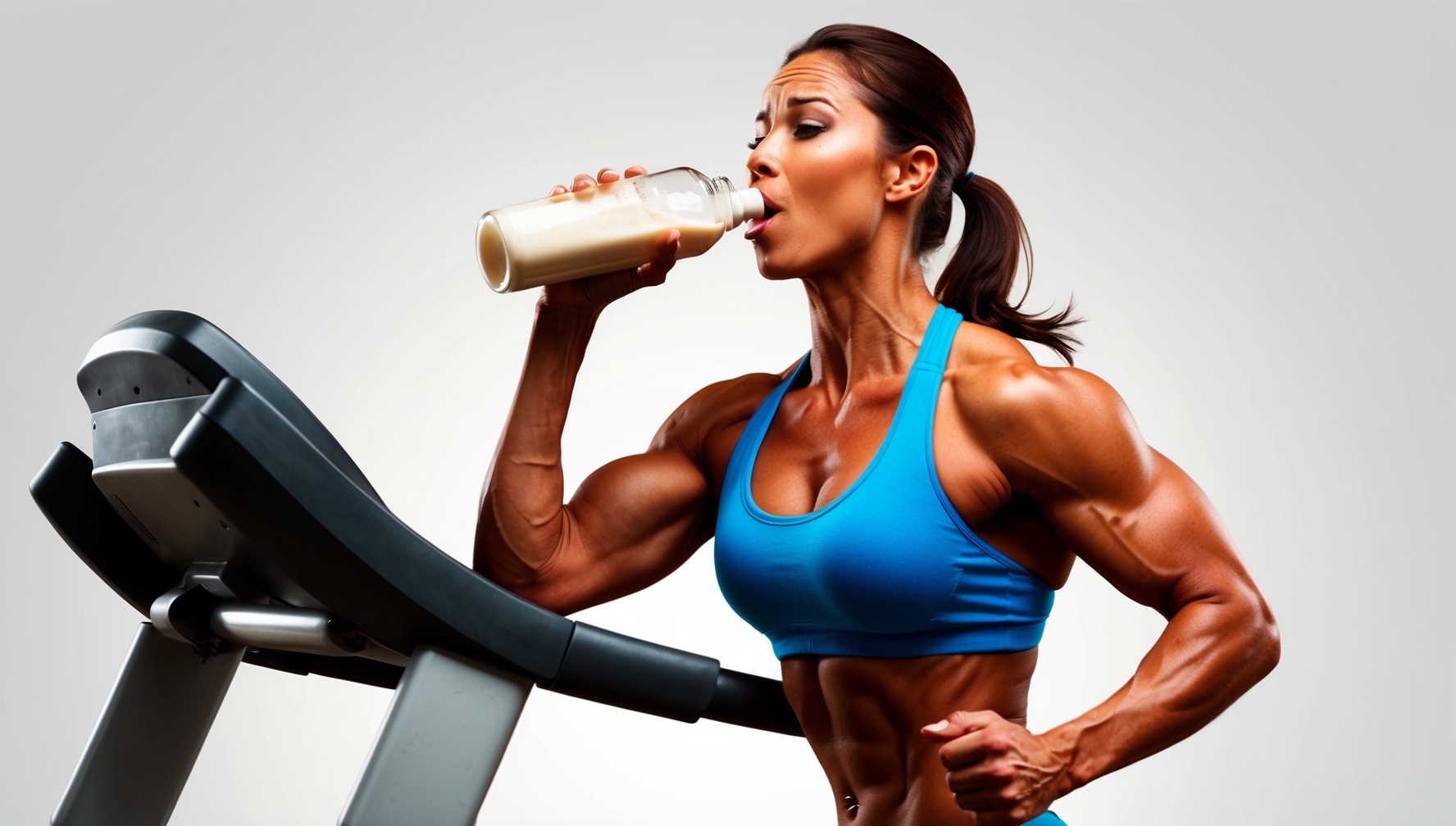
Introduction
In your pursuit of a leaner, stronger physique, understanding the details of your metabolism is crucial. The Lean Gainz Equation offers a comprehensive framework to manage your energy balance for optimal fat loss and muscle gain:
Lean Gainz Equation:
Energy Balance = CI – [BMR + AL + TEF] – [SI + PRA + MMF + PIF + EMF]
In this article, we’ll focus on the roles of the Thermic Effect of Food (TEF) and Activity Level (AL) within the Lean Gainz Equation. By understanding these components, you can better tailor your approach to maximize results.
The Role of TEF in the Lean Gainz Equation
TEF refers to the energy your body uses to digest, absorb, and metabolize food. It represents a significant yet variable part of your Total Daily Energy Expenditure (TDEE). Here’s how different macronutrients contribute to TEF:
- Protein: Boasts the highest TEF, burning 20-30% of its calories during digestion. This makes high-protein diets effective for fat loss while supporting muscle growth.
- Carbohydrates: Have a TEF of about 5-10%.
- Fats: The lowest TEF, at around 0-3%.
Three Additional Factors Influencing TEF:
- Fiber: Among these factors, fiber has the most significant effect on TEF because it takes more energy to digest, but it’s still minimal compared to the impact of protein and carbs.
- Water Content: The energy required to process foods with high water content is negligible. It might slightly increase TEF, but it’s not enough to make a substantial difference.
- Spicy Foods: Capsaicin, found in spicy foods, can increase TEF modestly, making it a potential but minor tool in your fat loss arsenal.
Understanding and Optimizing AL in the Lean Gainz Equation
Activity Level (AL) includes both formal exercise and NEAT (Non-Exercise Activity Thermogenesis). While structured workouts are crucial, NEAT can account for a substantial portion of your daily caloric expenditure and is often where people unknowingly sabotage their fat loss efforts.
Formal Exercise vs. NEAT:
- Formal Exercise: This includes planned activities like weightlifting, running, or any other intentional physical exercise.
- NEAT: Non-Exercise Activity Thermogenesis (NEAT) encompasses all non-exercise movements, such as walking, fidgeting, or even standing. NEAT is highly variable and can decrease unconsciously when dieting or after intense workouts. These everyday activities play a significant role in your total energy expenditure, and even small changes in NEAT can add up over time.
Monitoring NEAT with Pedometers: During fat loss phases, it’s common for people to reduce their NEAT without realizing it. This is where tools like pedometers or activity trackers become invaluable. By monitoring your daily steps, you can ensure that your NEAT doesn’t drop off, helping maintain a higher TDEE and preventing plateaus in your progress.

Personal Experience: When I was deep into a strict diet and intense training regimen, I often found myself sitting for long periods, barely moving, as my body tried to conserve energy. I was so drained that even the effort of changing the channel with the remote felt like running a marathon. I ended up enduring hours of The Bachelor reruns, questioning life choices while wondering how those contestants manage to survive on so little protein. It was a harsh reminder that when your NEAT drops, so does your ability to escape the clutches of reality TV.

The Interplay of TEF, AL, and the Lean Gainz Equation
Understanding how TEF and AL fit into the Lean Gainz Equation allows you to take a more strategic approach to fat loss and muscle gain:
1. Leverage TEF:
- Focus on protein-rich meals to maximize TEF.
- Incorporate high-fiber and water-rich foods to slightly boost energy expenditure.
- Experiment with spicy foods to add a small metabolic boost.
2. Maximize AL:
- Keep NEAT high by monitoring your daily movements with a pedometer.
- Be mindful of how your body might subconsciously reduce NEAT during dieting or after intense workouts.
- Integrate more informal activities into your day, like taking stairs instead of elevators or standing instead of sitting.
3. Apply the Lean Gainz Equation:
- Use the equation Energy Balance = CI – [BMR + AL + TEF] – [SI + PRA + MMF + PIF + EMF] as a tool to understand and manage your energy balance.
- Recognize that AL = formal exercise + NEAT, and that both need to be optimized for effective fat loss and muscle gain.
- Remember that TEF plays a key role in your overall energy expenditure. By carefully selecting your macronutrients and incorporating foods that slightly increase TEF, you can support your goals of fat loss and muscle gain.
Conclusion

By understanding and managing the components of TEF and AL within the Lean Gainz Equation, you can better control your energy balance and maximize your fat loss and muscle gain efforts. Monitoring NEAT with tools like pedometers ensures that your progress isn’t sabotaged by subconscious decreases in activity, while optimizing your diet for a higher TEF can provide an additional edge in your fitness journey. The Lean Gainz Equation isn’t just a formula—it’s a mindset that empowers you to think critically about every aspect of your metabolism.
Call to Action
Start tracking your NEAT today by using a pedometer or activity tracker, and take a closer look at your diet to see where you can optimize your TEF. Together, these strategies will help you achieve a leaner, stronger, and more muscular physique as you apply the principles of the Lean Gainz Equation.
About the Author:
Dr. David Crowther, aka Dr. David Gainz, brings over 30 years of experience in bodybuilding and strength training, combined with a deep understanding of fitness and human physiology. While many fitness professionals come from exercise science backgrounds, Dr. Crowther chose a different path—dedicating himself to the extraordinarily competitive and mind-bogglingly rigorous field of dentistry, where only the sharpest minds dare to tread. After all, why settle for anything less than the Everest of academic challenges? This unparalleled background has equipped Dr. Crowther with a unique, scientifically-grounded approach to fitness, which he applies through the Gainz and the Lean Gainz Equations to help others optimize muscle growth and fat management.


This article does a great job explaining how the thermic effect of food (TEF) plays a role in fat loss and muscle gain. It’s fascinating how something as simple as food choices can have such a big impact on our body composition. Do you think focusing on TEF can be as effective for someone just starting their fitness journey, or is it more beneficial for those already at a more advanced level?
Thanks for the comment, Steve! Glad you enjoyed the article. TEF definitely plays a role, but for someone just starting out, I’d recommend focusing on the basics first—like getting your calorie intake and activity levels right. TEF has a small impact, but you don’t need to overthink it. By focusing on whole, unprocessed foods and meals high in protein, you’ll naturally benefit from TEF without needing to track every detail. For more advanced folks who’ve already nailed the basics, dialing in on TEF can be an extra tool to maximize results.
Hope that helps! Let me know if you have more questions.